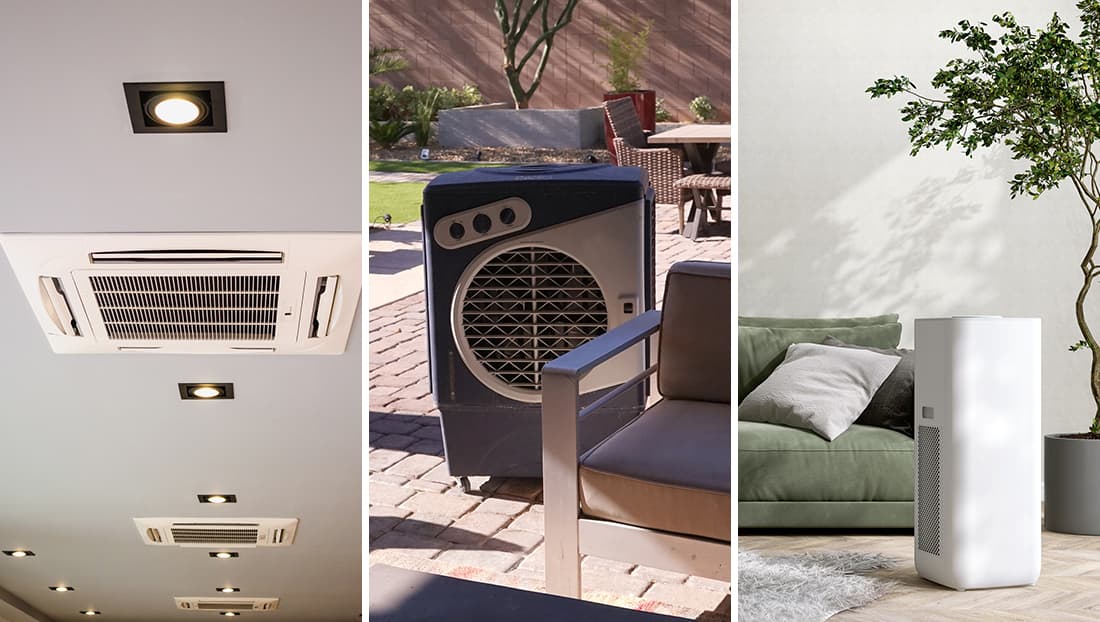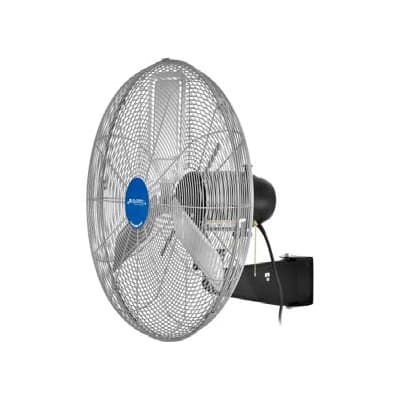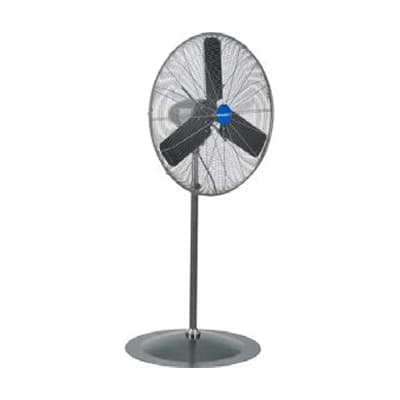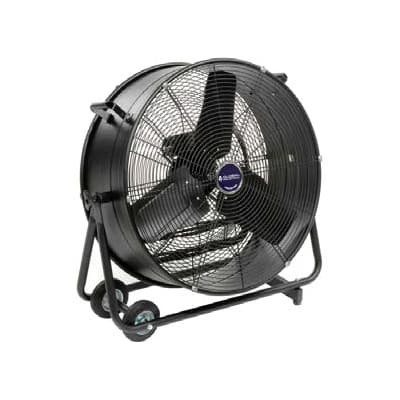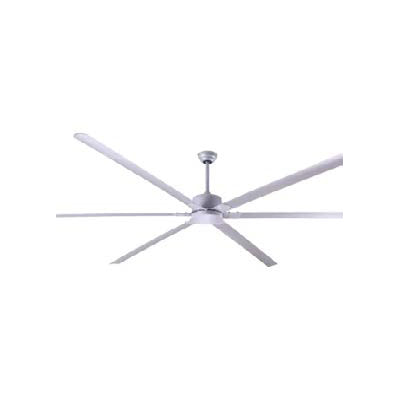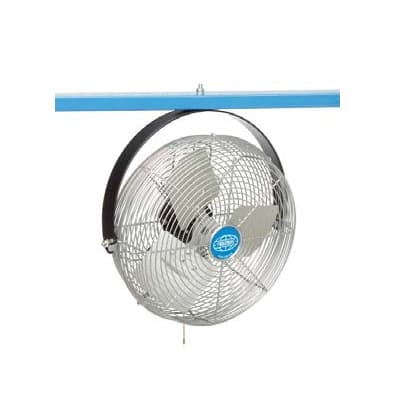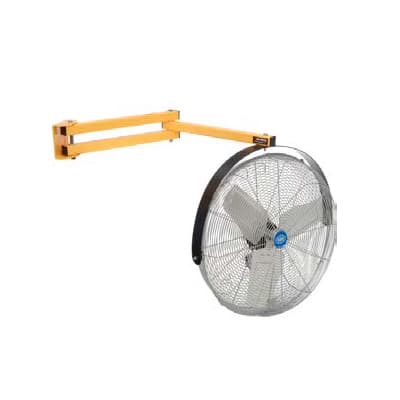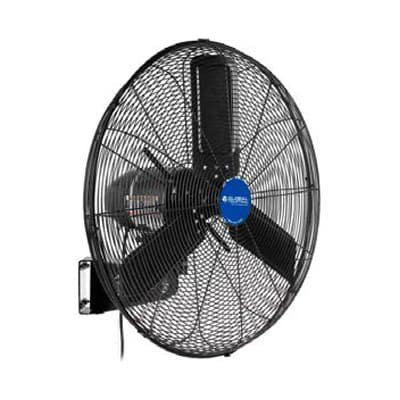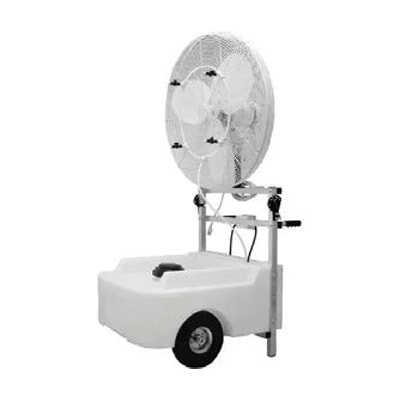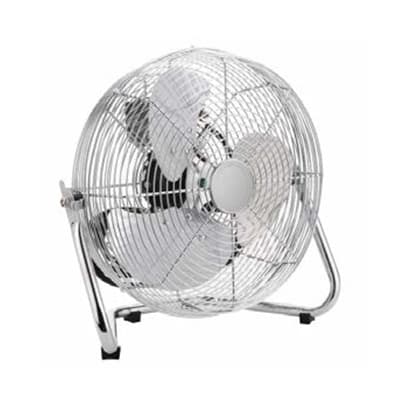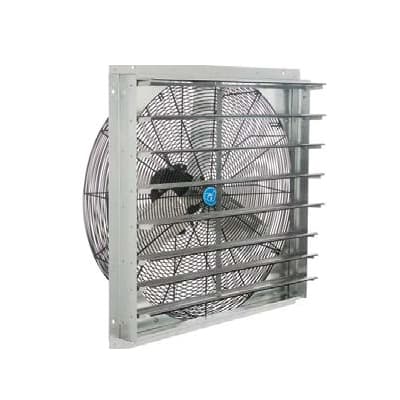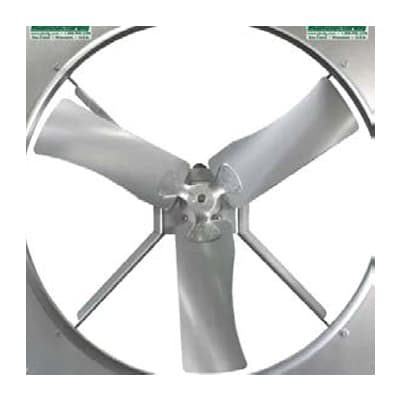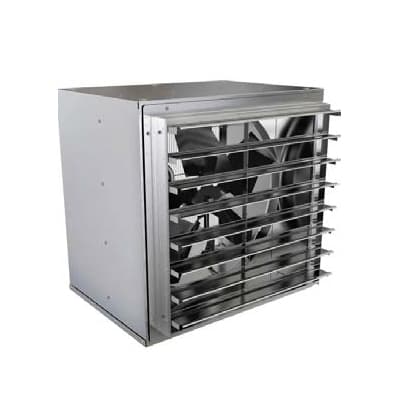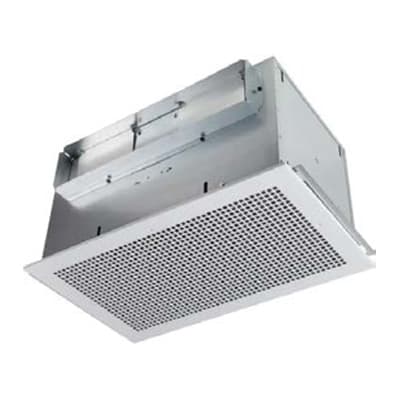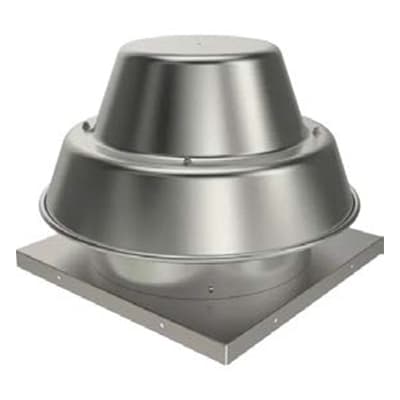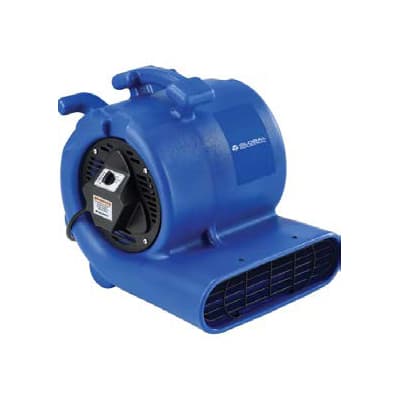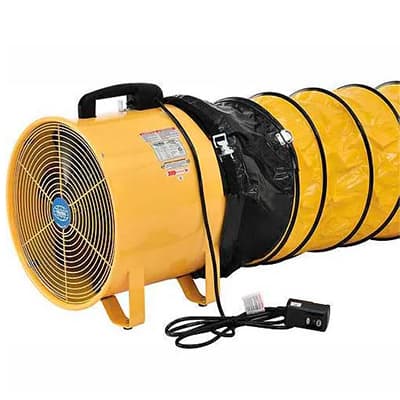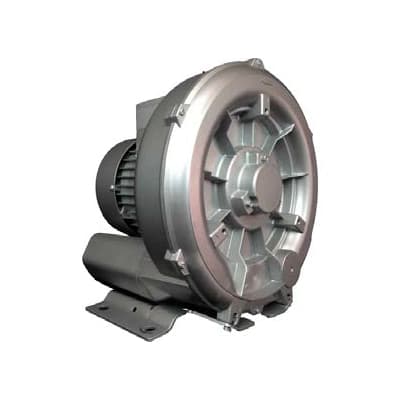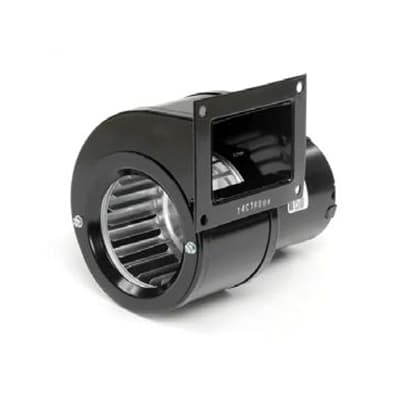Anyone who’s ever needed to purchase a commercial or industrial-grade fan knows that not all fans are created equal. Efficiency and effectiveness are crucial factors to consider, and one fan type will perform perfectly in one space and underperform in another. The cooling capacity of your fan– the flow and cooling it can provide to your specific industrial space–is the first factor to look at and is often measured in CFM (cubic feet per minute). Choosing a fan with an adequate CFM rating is crucial for the optimal management of temperature and air circulation, as the fan's coverage area is to efficiently cool your whole workspace. Cost effectiveness is also vital to consider; always compare initial purchase costs as well as long-term operating expenses (such as energy use and maintenance) between potential models.
You also should also prioritize fans that operate quietly and conveniently, since a noisy and bulky fan unit can be disruptive to a work environment and hurt both productivity and employee happiness. Try to find a fan unit with adjustable settings to further tailor airflow to your space’s needs and go for energy-efficient models to reduce operating costs. Overall, the right industrial fan for the job should find a balance between efficiency, raw cooling power, convenience, and cost-effectiveness.
But before you decide on what fans are right for you and your business or institution, it’s important to understand the basics and know what’s out there.
Industrial Fans- Know the Basics
Fans made for industrial use come in many types tailored for specific uses.
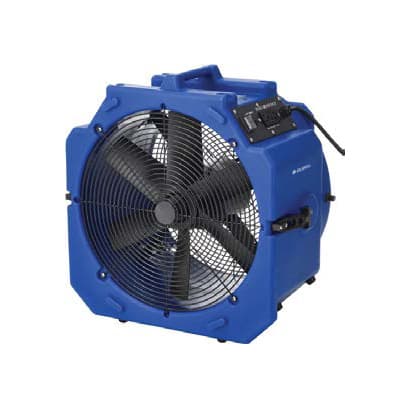
Axial Fans:
Axial fans force extracted air to flow parallel to the shaft that the fan blades rotate around. This creates a pressure difference that allows the fan to move large volumes of air more efficiently and effectively, making them well suited to cooling a variety of spaces that can be difficult to cool such as computer rooms or rooms with a lot of active electronic equipment. They’re used in HVAC systems, heat exchange units, air conditioning condensers, and industrial spot cooling.
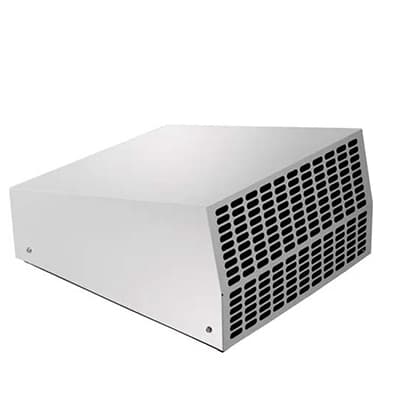
Centrifugal Fans:
Centrifugal fans, by contrast, push air and gasses at a right angle, are often less efficient, making them more common in households. Many different kinds of fans are axial fans, including some of the varieties we’ll discuss below.
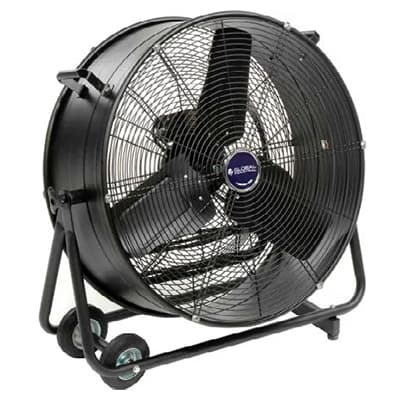
Cooling Fans:
Cooling fans, or cooling tower fans as they’re sometimes known, are a kind of axial fan that generally have large diameters, allowing for low pressure and larger airflow volume. Cooling fans are commonly used in steam condenser systems, wet mechanical cooling towers, radiators, and other air-cooled systems.
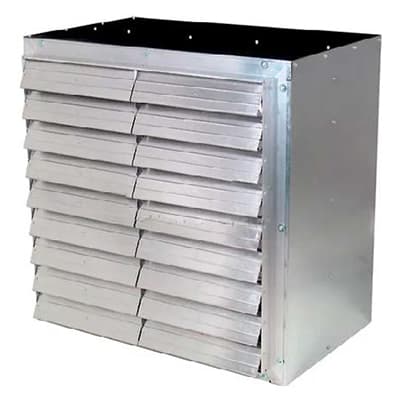
Exhaust fans:
Exhaust fans are a type of centrifugal or axial fan designed to remove air or gasses from a space, usually for safety reasons. These are very common in industrial settings as dangerous airborne substances are common in many industrial workplaces.
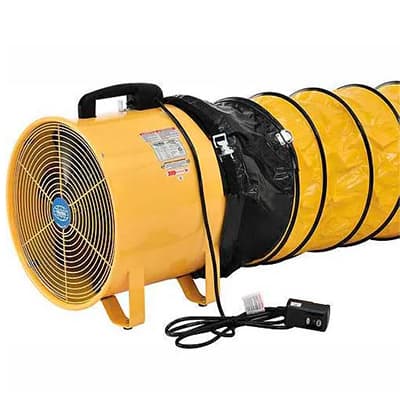
Blowers:
Though “blower” and “fan” are often used interchangeably, blowers work slightly differently. Blowers work at moderate air pressure- generally a ratio between 1:1.1 and 1:1.2. Blowers also move air in a specific direction, while fans move air throughout a defined area.
Application Guide
Industrial-use fans and blowers come in a wide array of designs— including specialty models like smart fans, fandaliers, and hyper-energy-efficient dc fans - to cover a wide array of applications. While some fan types can be used for a variety of jobs, your needs may require a purpose-built model, so it’s important to understand which type to use in any given scenario.
Air Conditioners, Evaporative Coolers, and Dehumidifiers
Unlike air conditioners, which cool air using a refrigerant gas and a chemical conversion cycle, evaporative coolers, sometimes called “swamp coolers,” cool air by collecting moisture in the air, evaporating it, and blowing it back out as cool air. Dehumidifiers, as the name suggests, remove moisture from the air and do not themselves cool or move air. Air conditioners have dehumidifiers built-in, while evaporative coolers do not.
When to use an Evaporative Cooler
Evaporative coolers are far more energy efficient and have a much lower carbon footprint than reverse-cycle air conditioners, but unlike most air conditioners, they don’t remove moisture from the air, they merely cool it. This makes them excellent in dry climates, where excessive moisture is less likely to cause mold and mildew to grow and cause machinery and electronics to degrade faster or malfunction.
Evaporative coolers are a good fit for:
- Large industrial spaces where operational costs are a major concern.
- Spaces in dry climates or spaces that need both cooling and humidification.
- Warehouses, construction sites, and loading docks.
- Businesses with an eco-friendly mission statement.
- Spaces open to the outside.
When to use an Air Conditioner
Air conditioners have more powerful cooling ability than evaporators and dehumidify air in addition to cooling it, but they are far less energy efficient and have a much larger carbon footprint compared to evaporator coolers or fans.
Air Conditioners are a good fit for:
- Small and mid-sized spaces
- Spaces that require both cooling and dehumidification
- Spaces with moisture-sensitive equipment
- Spaces with poor air circulation
When To Use a Dehumidifier
Since air conditioners are also dehumidifiers, you’ll likely not need an additional dehumidification unit in your space, unless there is too much moisture present for the air conditioner alone to handle. Evaporative coolers, however, actively put more moisture into the air- so a dedicated dehumidifier may be required, depending on the scenario.
Dehumidifiers should be considered for use:
- In damp climates where an AC unit’s dehumidifier isn’t sufficient
- In spaces using an evaporative cooler where energy costs need to be kept low but where excess moisture is a concern
Industrial Fans versus Residential Grade Fans
Industrial grade fans differ from residential grade fans in multiple ways. First and foremost, they’re built to stand up to heavy-duty use over long periods of time, making them indispensable for industrial spaces that require constant and reliable ventilation and cooling. They tend to have larger, heavier blades and more powerful motors than residential grade models, allowing for maximum airflow and cooling in large spaces like warehouses and industrial workspaces. Lastly, they’re built with materials made to resist harsh environments where extreme heat and corrosive materials are a necessary part of daily operation.
Positioning and installation location: Best Practices
While there are usually a number of viable options for the placement and positioning of your fan, air conditioner, or cooling unit, there are best practices to keep in mind depending on the space in question.
Best Practices
- The optimal placement for industrial ceiling fans is generally a central location, 20-30 feet above the floor, though most have a range of effectiveness between 10 and 50 feet above the floor.
- Air conditioners should be placed where air flow is optimal, and not in confined parts of your space or near objects or equipment that interrupt air flow.
- Air conditioners should not be placed near a door or opening that is frequently used, since the constant change in airflow and loss of cool air will result in the unit working much harder, cooling less efficiently and increasing energy costs.
- Window AC units placed under direct sunlight use more energy to cool a space than units placed in a shaded area. A unit placed in a shaded area will typically use 30% less electricity, which translates to a big difference in energy costs.
- Fans, AC units, and blowers that require wall socket power should be installed as close to a wall socket as possible to avoid the use of extension cords, which can reduce safety and energy efficiency.
- AC units, blowers, and coolers should always be installed with at least three feet of clearance on the maintenance access side of the unit.
Industrial fans come in a wide variety of designs, tailored to fairly specific uses.
Cooling Fans
Wall Mounted Fan:
Wall mounted industrial fans can be installed directly onto workspace or storage space walls and a great space-saving option for smaller and cramped spaces. They’re highly customizable in terms of size, speed, and mounting method and are a good choice for schools and smaller factory spaces.
Pedestal Fans:
Pedestal fans offer reliable and powerful air circulation for spaces of all sizes, and their mobility makes them excellent for spaces where furniture or equipment is frequently moved. Outdoor fans and adjustable height models are available.
Industrial Ceiling Fans:
Industrial ceiling fans are a powerful and efficient option for commercial spaces such as gyms, workshops, and areas where floor and wall space is at premium. They’re available in a variety of sizes and blade counts, all engineered for the best airflow possible.
Workstation Fans:
Workstation Fans are wall-mounted and highly adjustable, sending airflow precisely where it is needed. They’re a powerful and efficient option for workshops and many models are available with stands.
Outdoor Fans:
Outdoor fans are specially built for usage in outdoor or open-air workshops and event spaces. They’re designed to withstand the elements while still providing powerful airflow. They come in both mountable and standing varieties.
Misting Fans:
Misting fans function similarly to evaporator coolers, cooling the air by pumping water through a nozzle which is then circulated through the fan and is evaporated in warm air, cooling it. They are excellent for cooling dry-climate spaces with more precision than an evaporator cooler, and are available in mountable, desktop, and on-stand designs.
Floor Fans:
Floor fans are simple but versatile and effective for air circulation in nearly any space. Their mobility allows for highly modular cooling and airflow setups.
Exhaust Fans
Exhaust fans remove dust, smoke, other particles, and heat from a space and replace it with fresh air, allowing for better breathing, improving both productivity and employee morale, and reducing worker’s comp claims and sick days. There are several varieties of exhaust fans available, each purpose built for specific scenarios.
Shutter & Guard Mount Fans
Shudder fans are designed to cool spaces rapidly using short but powerful bursts of airflow which dissipates heat faster than many conventional methods. Guard mount fans are designed to pull heat, odors, stale air, and moisture out of spaces to improve air quality. Both are a good choice for barns, stuffy workspaces, garages, and other spaces with low static pressure.
Panel Exhaust Fans
Panel exhaust fans provide air circulation, cooling, and pest control for a variety of industrial spaces, including warehouses, power plants, and agriculture. Panel fans are designed with thermal overload protection and an enclosed motor for protection of internal components, making them reliable and low maintenance in harsh conditions.
Cabinet Exhaust Fans
Like panel exhaust fans, Cabinet Exhaust Fans pull stale air, odors, heat, and moisture out of spaces like greenhouses, warehouses, and factories, improving air quality by reducing airborne contaminants. These fans are mounted into a framed wall opening and are not joined with ductwork.
Bathroom Exhaust Fans:
Bathroom exhaust fans are designed to remove humidity, pollutants, and odors from commercial bathrooms using efficient ventilation. A wide variety of duct sizes, noise levels, and airflow capacities are available, as are models built with heaters and lights and super-efficient Energy Star certified models.
Roof Ventilators
Roof ventilators provide a constant flow of air vertically from a facility in order to remove heated air, moisture, and pollutants. They help protect against the impact of changing moisture levels and temperatures inside a facility, protecting equipment and infrastructure.
Blowers
Blowers are purpose-built fan systems that exhaust smoke and provide cool air to a workspace or facility. They can be used for a variety of applications, such as blower motors in HVAC systems, fume venting in small or confined spaces, and carpet dryers.
Portable Air Movers & Floor Dryers
Portable Air Movers & Floor Dryers are used for drying wet floors, carpets, walls, and other surfaces. They are well suited to janitorial and maintenance work and cleanup efforts such as flood restoration. They are highly durable, but compact and lightweight.
Axial Air Movers
Axial air movers are compact, portable, and highly adjustable blowers used for fanning, cooling, and ventilating in industrial spaces. Built for durability as well as mobility, they’re very effective for removing dust, smoke, and pollutants, making them an indispensable industrial workshop tool.
Confined Space Blowers
Confined Space Blowers are designed to provide high-powered air circulation in tight or enclosed spaces. They’re flame retardant and are resistant to high temperatures, making them excellent for hazardous applications. They’re available in a wide range of sizes and voltages.
Regenerative Blowers:
Regenerative Blowers are designed to move large volumes of low-pressure air or in vacuums. They are ideal for applications that involve flammable gasses and hazardous and volatile materials.
Centrifugal Blowers
Centrifugal blowers are designed to move air and industrial gasses at an angle to the incoming flow, or in a specific direction away from a space using a ducted housing. They’re excellent for use in confined spaces or areas with obstructed air flow.
Your Employees Should Be Your Biggest Fans
Choosing the right fan, blower, or cool for your industrial needs is a critically important decision that can have a huge impact on the safety, comfort, and productivity of your employees. Assessing your specific needs and considering factors such as airflow capacity, energy efficiency, carbon footprint, noise levels, and room shape and size are crucial to making the right decision, and Global Industrial has given you all the tools you need to make an informed decision.
The information contained in this article is for informational, educational, and promotional purposes only and is based on information available as of the initial date of publication. It is the reader’s responsibility to ensure compliance with all applicable laws, rules, codes and regulations. If there is any question or doubt in regard to any element contained in this article, please consult a licensed professional. Under no circumstances will Global Industrial® be liable for any loss or damage caused by your reliance on this article.
